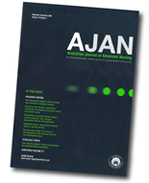CORONARY ANGIOPLASTY: IMPACT ON RISK FACTORS AND PATIENTS’ UNDERSTANDING OF THE SEVERITY OF THEIR CONDITION
Main Article Content
Keywords
coronary artery disease, survey, HPLP II
Abstract
Objective: To explore self-reported changes in coronary risk factors by patients three to nine months following coronary artery angioplasty.
Design: Descriptive survey.
Subjects: Two hundred and thirty four patients, three to nine months after elective angioplasty. Patients were selfselected from a convenience sample of all patients undergoing angioplasty within a six-month period in two major metropolitan hospitals in Melbourne.
Main outcome measure: Self-reported responses to questions exploring patient’s risk factor reduction and understanding of their condition.
Results: Two hundred and thirty four (41.7%) out of 560 questionnaires were returned. Forty percent of subjects reported the recurrence of chest pain and 42% believed they no longer had coronary artery disease. 85% of respondents reported making at least one modification to their risk factors and stress was the most common risk factor identified.
Conclusion: Coronary artery angioplasty is one of the most common elective interventions for coronary artery disease. It restores blood flow in the diseased vessel but cannot treat the underlying disease processes. Although the majority of patients had altered their lifestyle and reduced at least one risk factor, 40% of patients in this study had a recurrence of chest pain and 42% believed their condition had been cured. Diet modification, increased exercise and stress reduction were the top three changes in lifestyle reported. The findings suggest there is a major need for better health education and follow-up for patients after coronary artery angioplasty.

